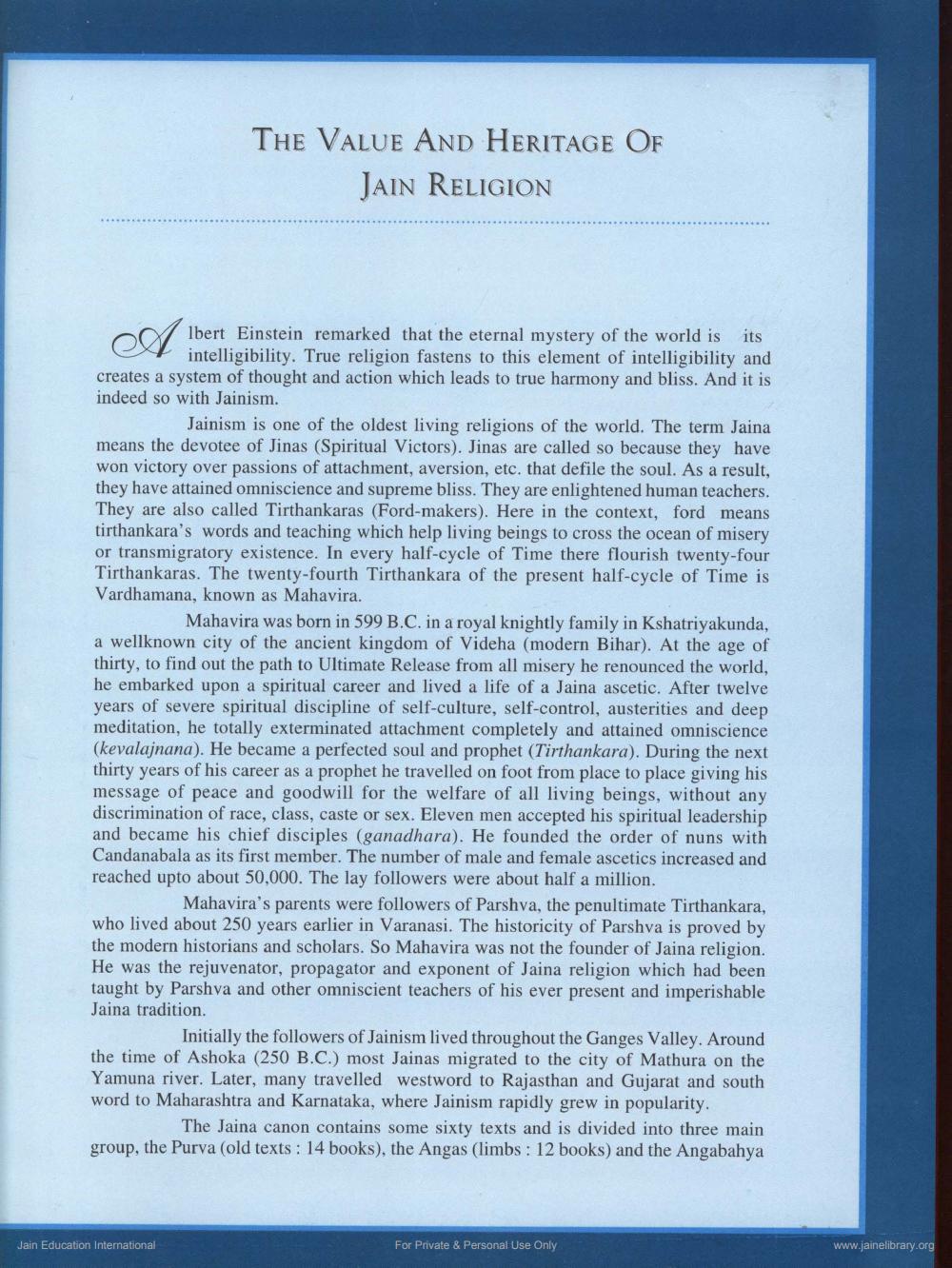________________
THE VALUE AND HERITAGE OF
JAIN RELIGION
lbert Einstein remarked that the eternal mystery of the world is its
intelligibility. True religion fastens to this element of intelligibility and creates a system of thought and action which leads to true harmony and bliss. And it is indeed so with Jainism.
Jainism is one of the oldest living religions of the world. The term Jaina means the devotee of Jinas (Spiritual Victors). Jinas are called so because they have won victory over passions of attachment, aversion, etc. that defile the soul. As a result, they have attained omniscience and supreme bliss. They are enlightened human teachers. They are also called Tirthankaras (Ford-makers). Here in the context, ford means tirthankara's words and teaching which help living beings to cross the ocean of misery or transmigratory existence. In every half-cycle of Time there flourish twenty-four Tirthankaras. The twenty-fourth Tirthankara of the present half-cycle of Time is Vardhamana, known as Mahavira.
Mahavira was born in 599 B.C. in a royal knightly family in Kshatriyakunda, a wellknown city of the ancient kingdom of Videha (modern Bihar). At the age of thirty, to find out the path to Ultimate Release from all misery he renounced the world, he embarked upon a spiritual career and lived a life of a Jaina ascetic. After twelve years of severe spiritual discipline of self-culture, self-control, austerities and deep meditation, he totally exterminated attachment completely and attained omniscience (kevalajnana). He became a perfected soul and prophet (Tirthankara). During the next thirty years of his career as a prophet he travelled on foot from place to place giving his message of peace and goodwill for the welfare of all living beings, without any discrimination of race, class, caste or sex. Eleven men accepted his spiritual leadership and became his chief disciples (ganadhara). He founded the order of nuns with Candanabala as its first member. The number of male and female ascetics increased and reached upto about 50,000. The lay followers were about half a million.
Mahavira's parents were followers of Parshva, the penultimate Tirthankara, who lived about 250 years earlier in Varanasi. The historicity of Parshva is proved by the modern historians and scholars. So Mahavira was not the founder of Jaina religion. He was the rejuvenator, propagator and exponent of Jaina religion which had been taught by Parshva and other omniscient teachers of his ever present and imperishable Jaina tradition.
Initially the followers of Jainism lived throughout the Ganges Valley. Around the time of Ashoka (250 B.C.) most Jainas migrated to the city of Mathura on the Yamuna river. Later, many travelled westword to Rajasthan and Gujarat and south word to Maharashtra and Karnataka, where Jainism rapidly grew in popularity.
The Jaina canon contains some sixty texts and is divided into three main group, the Purva (old texts : 14 books), the Angas (limbs : 12 books) and the Angabahya
Jain Education International
For Private & Personal Use Only
www.jainelibrary.org




